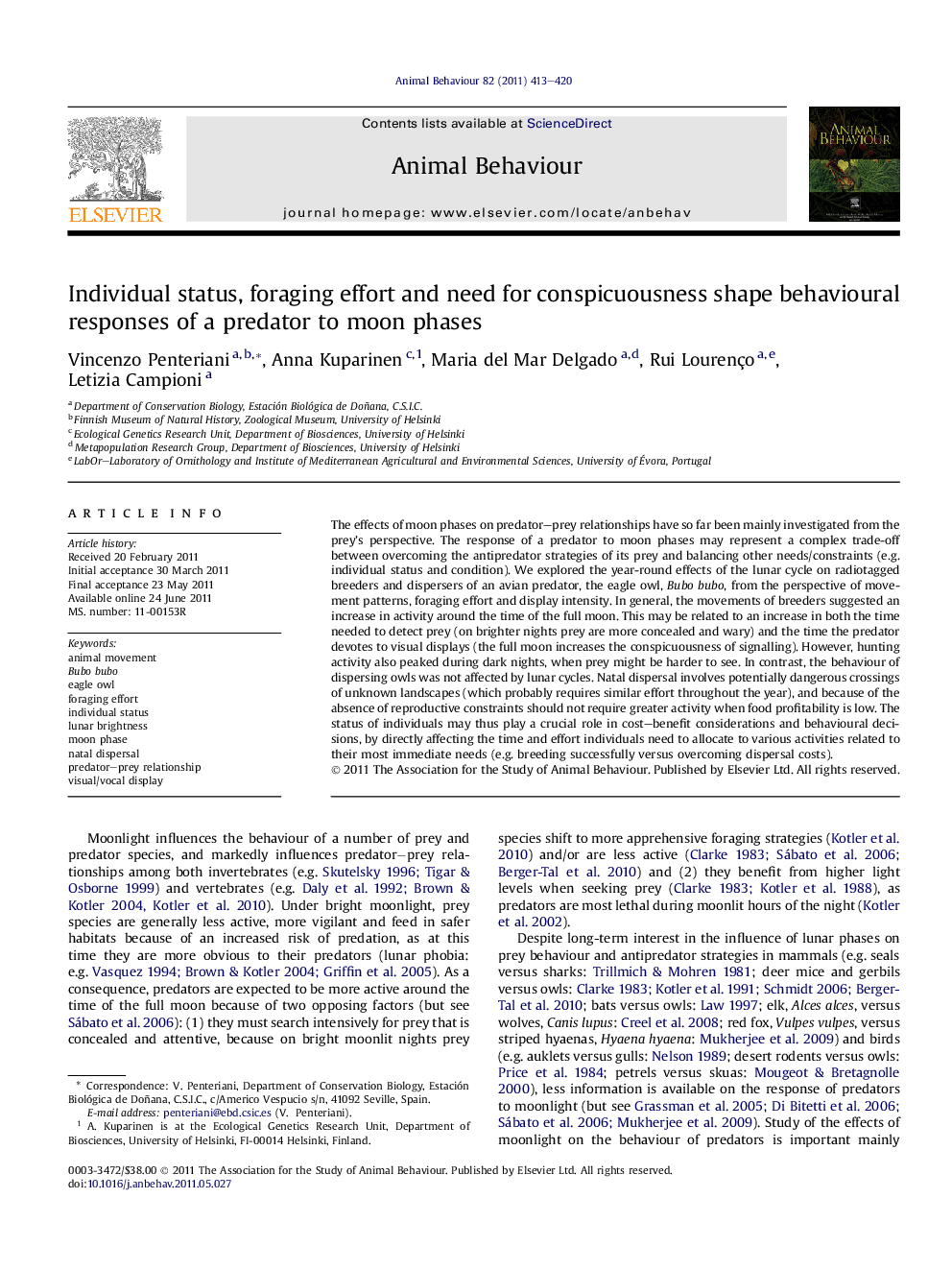| Article ID | Journal | Published Year | Pages | File Type |
|---|---|---|---|---|
| 2417013 | Animal Behaviour | 2011 | 8 Pages |
The effects of moon phases on predator–prey relationships have so far been mainly investigated from the prey’s perspective. The response of a predator to moon phases may represent a complex trade-off between overcoming the antipredator strategies of its prey and balancing other needs/constraints (e.g. individual status and condition). We explored the year-round effects of the lunar cycle on radiotagged breeders and dispersers of an avian predator, the eagle owl, Bubo bubo, from the perspective of movement patterns, foraging effort and display intensity. In general, the movements of breeders suggested an increase in activity around the time of the full moon. This may be related to an increase in both the time needed to detect prey (on brighter nights prey are more concealed and wary) and the time the predator devotes to visual displays (the full moon increases the conspicuousness of signalling). However, hunting activity also peaked during dark nights, when prey might be harder to see. In contrast, the behaviour of dispersing owls was not affected by lunar cycles. Natal dispersal involves potentially dangerous crossings of unknown landscapes (which probably requires similar effort throughout the year), and because of the absence of reproductive constraints should not require greater activity when food profitability is low. The status of individuals may thus play a crucial role in cost–benefit considerations and behavioural decisions, by directly affecting the time and effort individuals need to allocate to various activities related to their most immediate needs (e.g. breeding successfully versus overcoming dispersal costs).
